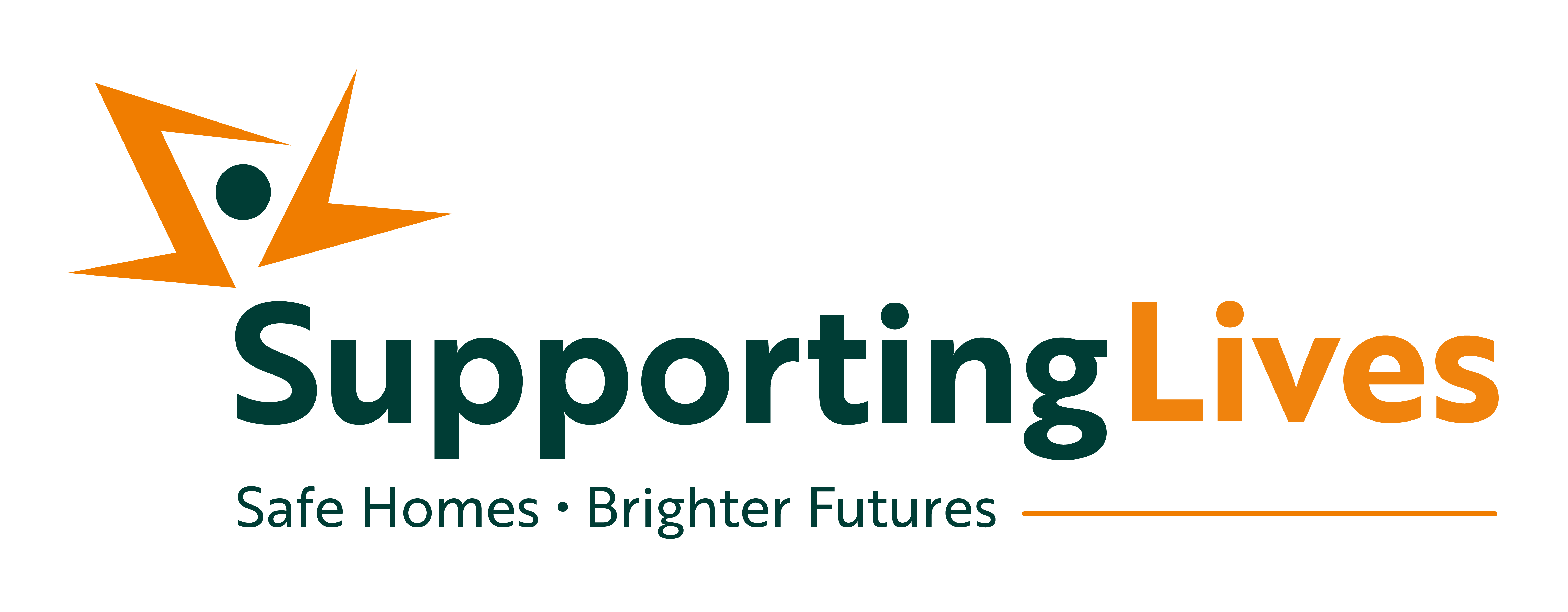The new brand identity for Supporting Lives was inspired by the chaos and unpredictability of life on the streets. It’s interesting to draw parallels between homelessness and the mathematical chaos theory, and how even during the most chaotic and difficult times in life there are always positive patterns, irrespective of how subtle and hidden, which can be nurtured and grown to achieve a stable and healthier lifestyle.

Comparing the life of someone who is homeless to chaos theory can provide a way to understand the complexity, unpredictability and sensitive nature of homelessness. Chaos theory, originating in mathematics and physics, deals with systems that are highly sensitive to initial conditions and exhibit unpredictable, yet patterned, behaviour over time. Here’s how these concepts can relate:
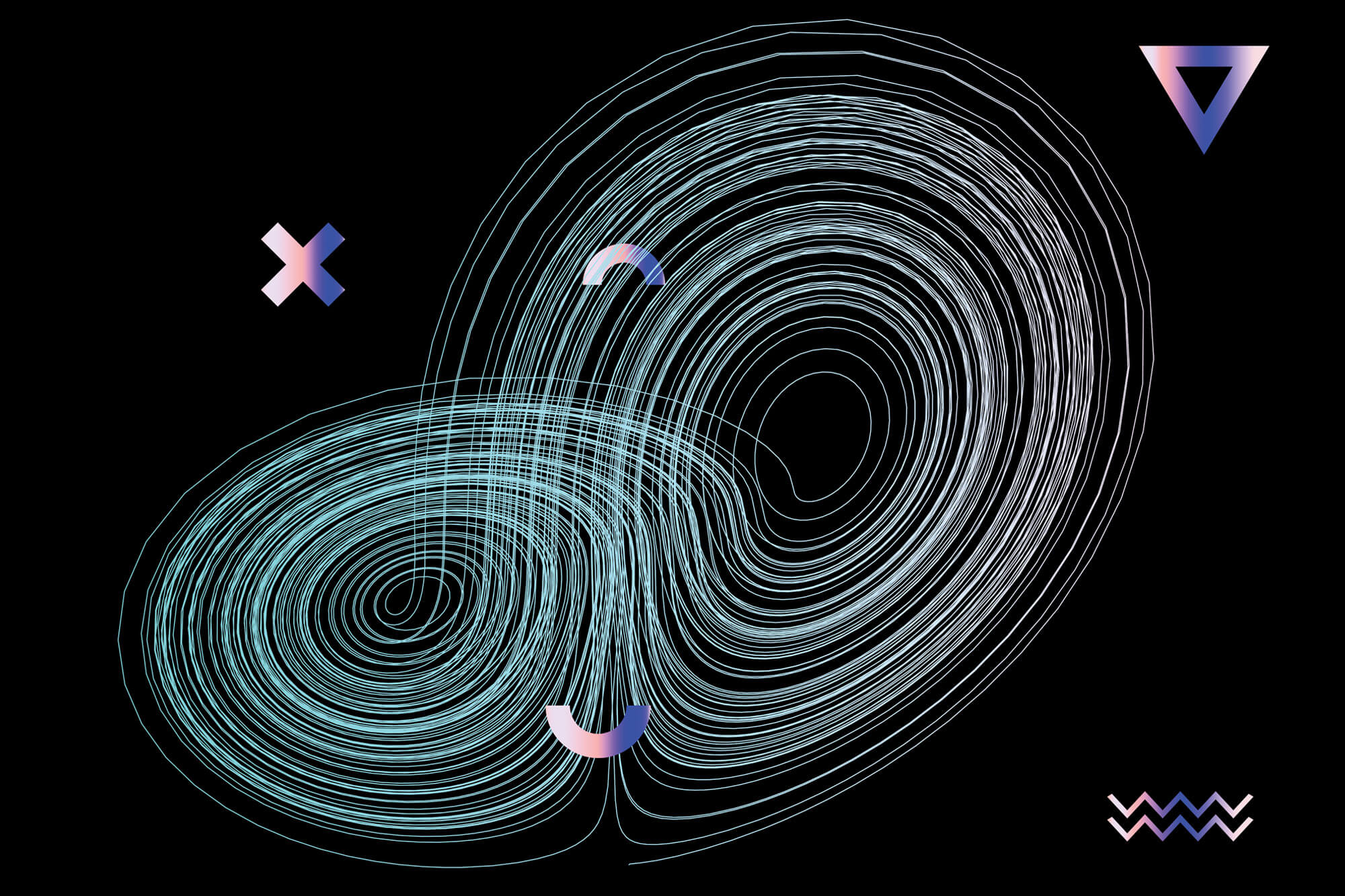
Sensitive Dependence on Initial Conditions (‘Butterfly Effect’)
- Homelessness Triggered by Small Events: In chaos theory, a small change in initial conditions (like a butterfly flapping its wings) can lead to massive, unpredictable changes in a system. Similarly, in someone’s life, seemingly small events—such as losing a job, a medical emergency, or a family conflict—can spiral into homelessness. The “butterfly effect” is visible when minor setbacks lead to the loss of housing, employment or support networks.
- Cascading Effects: Once a person becomes homeless, every minor decision or event can have a disproportionate impact on their situation, pushing them further into instability. This reflects how small changes can lead to significant consequences in chaotic systems.
Unpredictability and Non-Linearity
- Unpredictable Life Events: In a chaotic system, future outcomes cannot be easily predicted based on past behaviour, even if patterns exist. Similarly, the life of a homeless person often feels unpredictable and out of control. Where one day they might have food and shelter, the next day they could face sudden eviction, loss of belongings or health issues.
- Non-Linear Progression: Life for someone experiencing homelessness doesn’t follow a linear path of gradual improvement or decline. Small positive changes (e.g., finding a temporary shelter) may not lead to lasting stability, while negative events (e.g., a health crisis) can push them deeper into crisis quickly. This reflects the non-linear dynamics of chaotic systems, where outcomes are not proportional to causes.
Fractals and Repeating Patterns
- Patterns in Chaos: Chaos theory often involves fractal patterns, where similar patterns repeat at different scales. In the life of a homeless person, certain chaotic patterns (such as instability in housing, employment, or relationships) tend to repeat, regardless of attempts to stabilise their situation. This cyclical nature of instability mirrors the self-similar patterns found in chaotic systems.
- Recurring Challenges: Many people facing homelessness encounter recurring obstacles—lack of access to healthcare, difficulty maintaining employment, or bureaucratic challenges with social services—that create a cycle of chaos. These repeating challenges can trap individuals in a pattern of homelessness.

Feedback Loops
- Positive and Negative Feedback: In chaotic systems, feedback loops can either amplify chaos (positive feedback) or stabilise it (negative feedback). In the life of a homeless person, feedback loops might work similarly:
- Positive Feedback (Amplifying Chaos): A person’s stress from homelessness might lead to poor mental health, which makes it harder to seek or maintain employment, further worsening their situation. This creates a reinforcing loop that drives deeper chaos.
- Negative Feedback (Restoring Stability): On the other hand, accessing support services, finding community, or securing temporary housing might create stabilising feedback, helping reduce chaos in their life.
Edge of Chaos (Balance between Order and Disorder)
- Living on the Edge: Chaos theory suggests that complex systems often operate ‘on the edge of chaos’, where there’s a balance between order and disorder. Homeless individuals frequently live in this space—balancing between temporary moments of stability (such as finding shelter or food) and disorder (such as being displaced or facing violence).
- Surviving in Uncertainty: Homelessness can force people to develop resilience in highly uncertain and chaotic environments, similar to how systems thrive at the edge of chaos. They may find ways to navigate unpredictability, surviving by adapting to constantly changing circumstances.
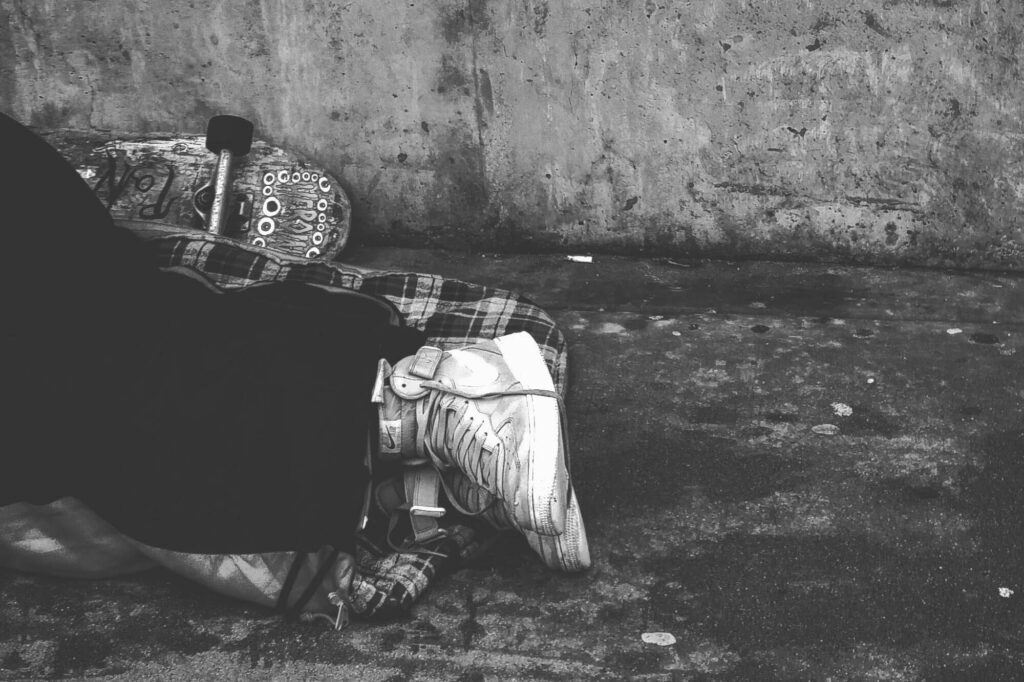
Emergent Patterns and Adaptation
- Adapting to Chaos: In chaotic systems, new, often surprising patterns can emerge from disorder. Similarly, homeless individuals often find ways to adapt, create routines, and survive in highly unstable environments. They may develop resourcefulness, find community among others in similar situations or rely on unexpected support networks.
- Small Changes Leading to Stability: Just as chaos theory shows that small changes can have large impacts, even small positive interventions (like access to stable housing, mental health care, or employment) can lead to significant improvements in the lives of homeless individuals, potentially stabilising their situation over time.
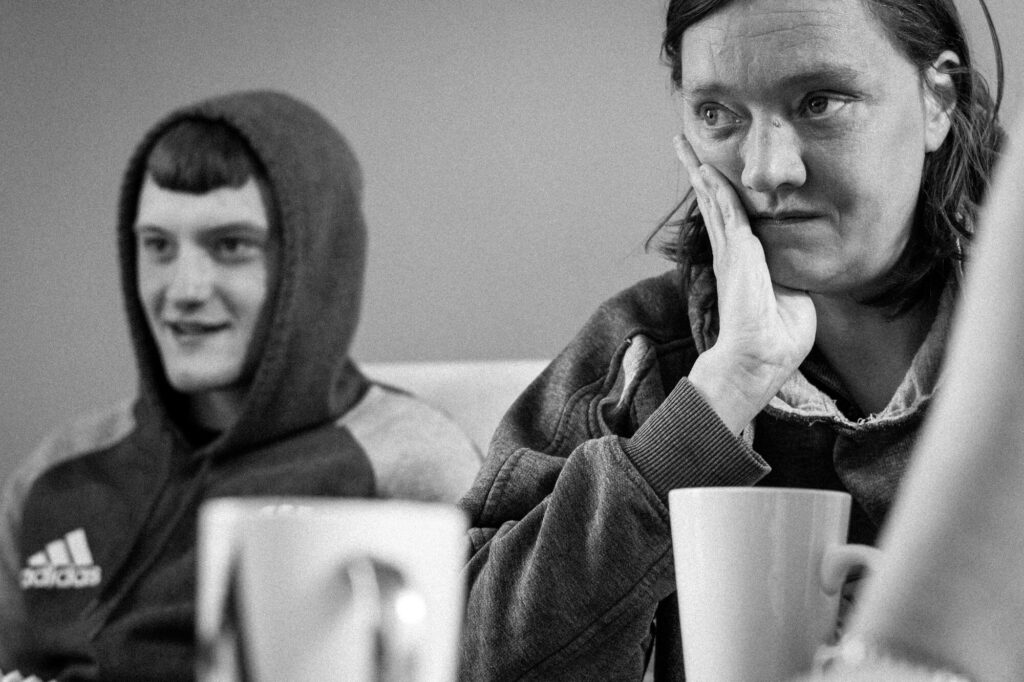
Complex Interactions and Systems Thinking
- Multiple Interconnected Factors: The life of a homeless person is shaped by a complex web of interactions—economic conditions, social policies, personal relationships and mental and physical health. Chaos theory highlights how these interconnected factors influence the system as a whole. A change in one area (like improved access to social services) can ripple through other areas (like employment opportunities or housing stability).
Just like in the chaos theory, the life of a homeless person can be sensitive to small changes, unpredictable, and shaped by complex, interconnected forces. Understanding homelessness through this lens emphasises the importance of addressing multiple factors simultaneously and creating systems that can provide stability.
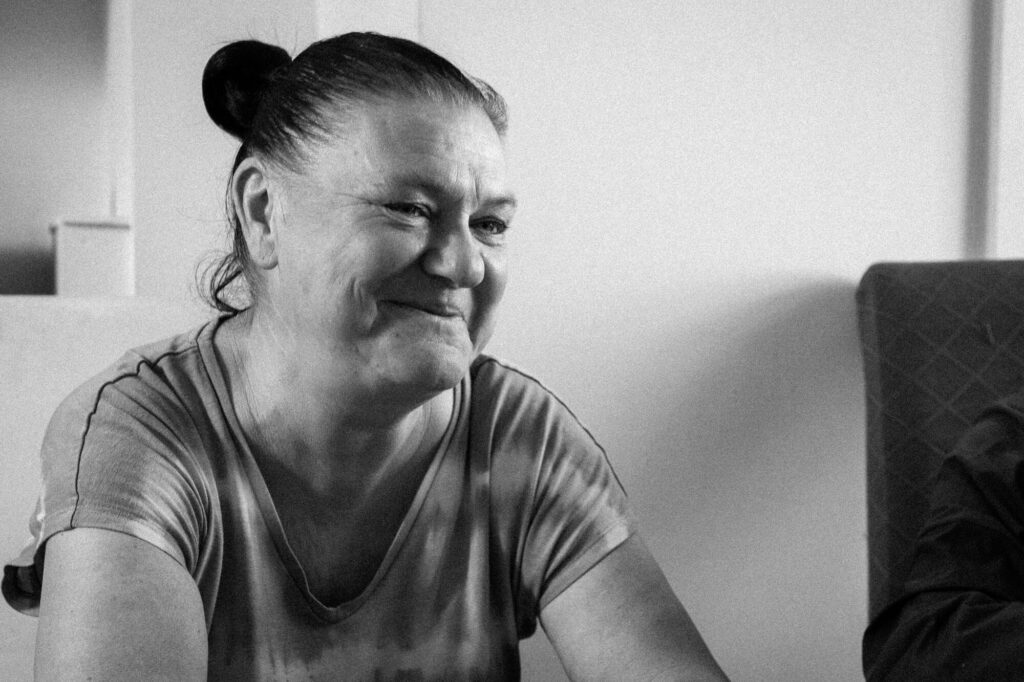
The new brand identity for Supporting Lives has been designed to reflect the chaotic nature of the lives of many people who step through the door. It’s been developed to show a sense of understanding and compassion for where their lives are at. This is achieved through the jagged random shapes which form the letters S and L. There is a distinct synergy between the Supporting Lives and Charter Recovery Housing logo and brand identities, designed to connect both organisations and simultaneously visually describe the differences. This is achieved through the circular dot between the letters which is designed to symbolise the person both organisations help.

Supporting Lives covers stages 1 and 2 recovery housing where peoples’ lives are more chaotic and unpredictable. We offer them a safe place to live where they can start to get their lives back on track. Charter Recovery Housing provides support for residents in stages 3 and 4, where their lives are beginning to take a more stable approach, in preparation for living independently within the local community.
Transitioning from homelessness to a more calm and structured life takes time, resources and resilience. Seeking support, building routines, focusing on health and staying connected with others can gradually lead to a calmer and more fulfilling life. By offering people safe and supportive accommodation, with access to a team of experienced professionals, we can give people the opportunity to start to change their lives.
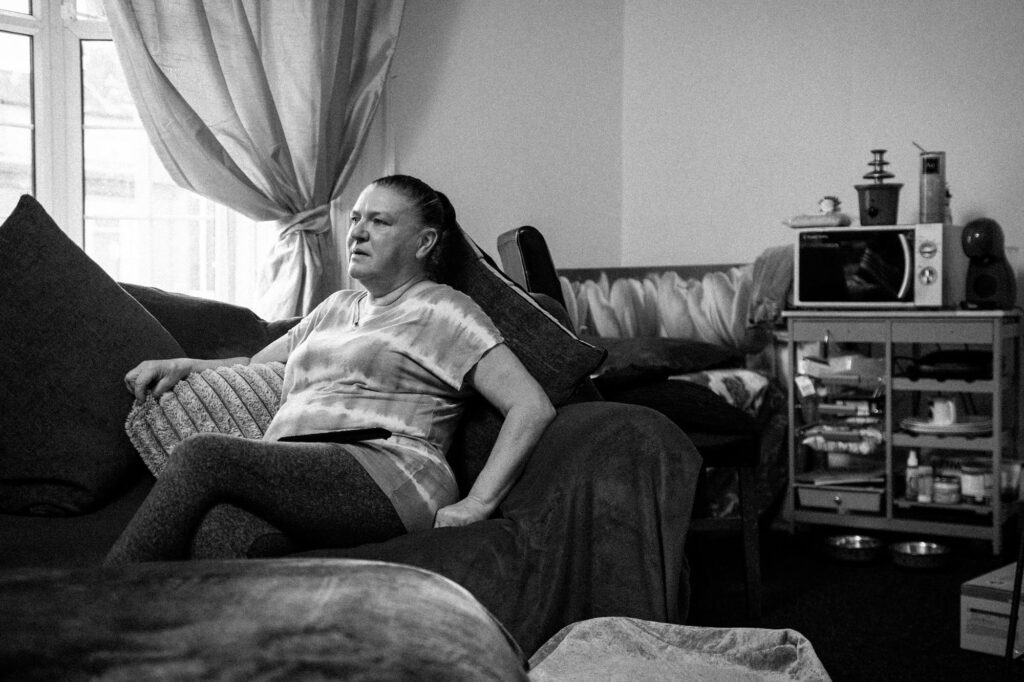
We hope this article gives you a deeper understanding of the vicious circles of chaos homeless people can find themselves in. If we can help change these patterns with small acts of support and kindness then the ripple effect has a dramatic positive effect on the lives of people that live on the streets, the wider community and can lead to systemic change.
If you are interested in working with us or would like to find out more about our referral process please contact us for a chat, we’re looking forward to hearing from you.
